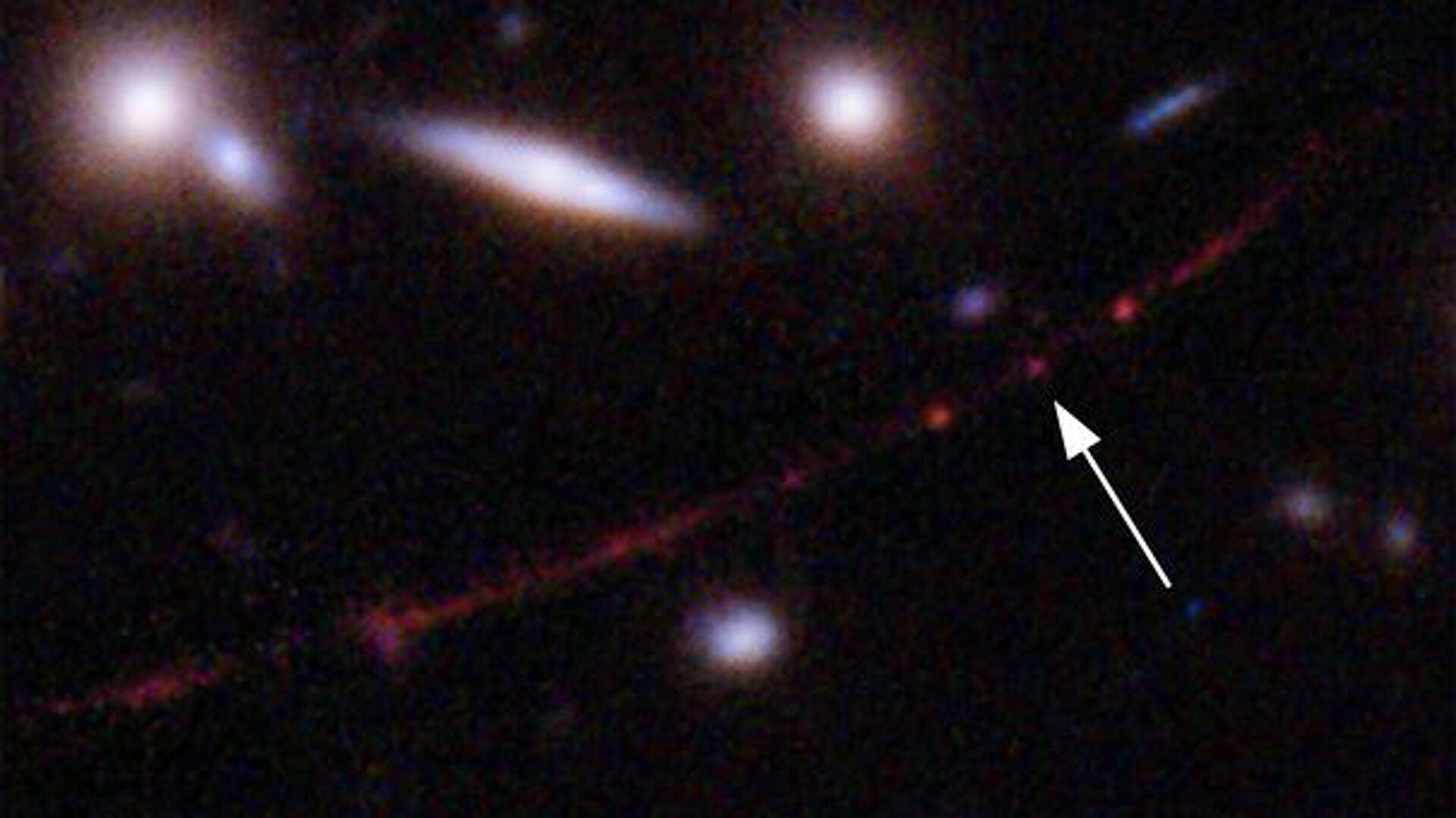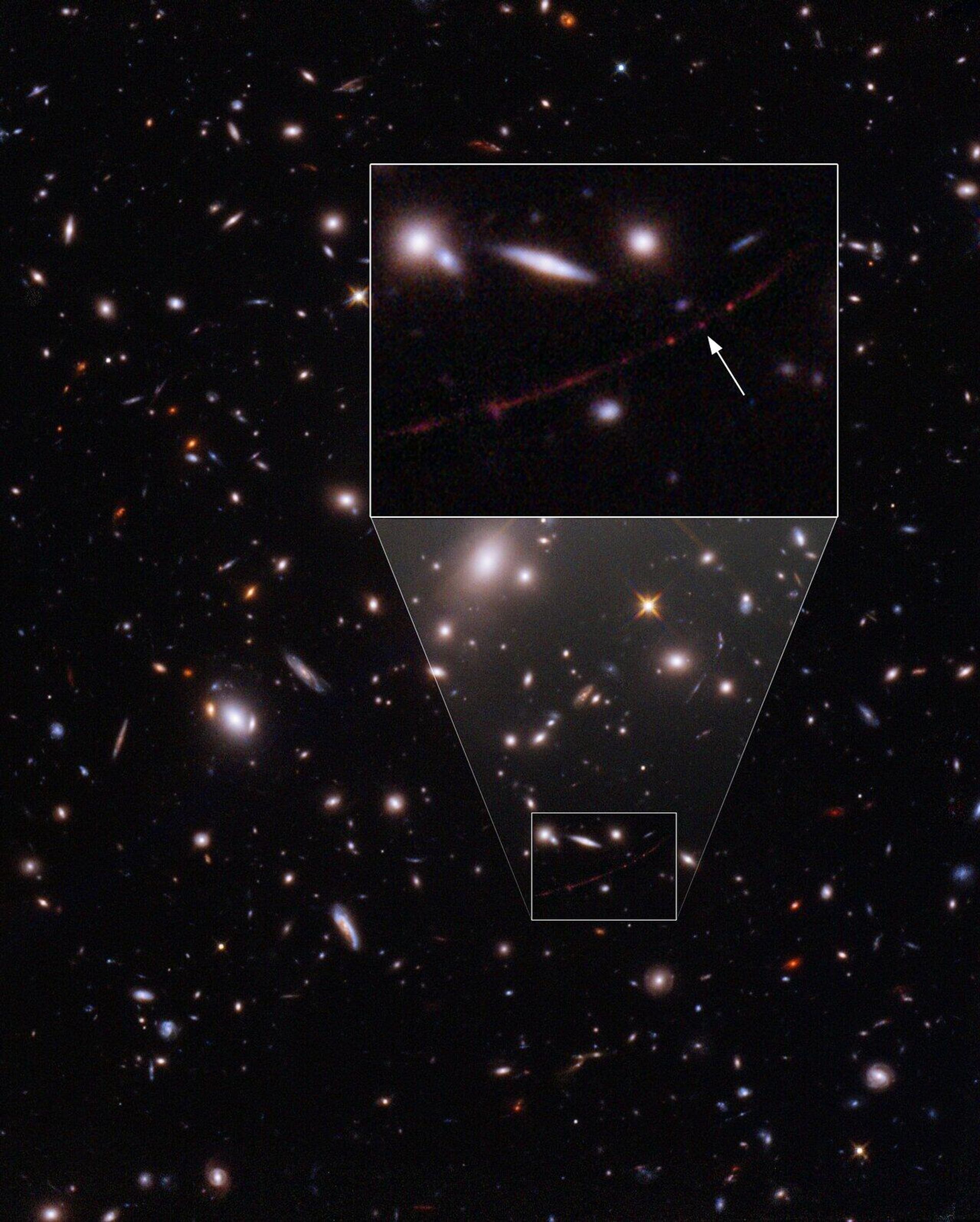https://sputnikglobe.com/20220330/hubble-telescope-discovers-most-distant-individual-star-ever-seen-1094341297.html
Hubble Telescope Discovers Most Distant Individual Star Ever Seen, Names It 'Earendel'
Hubble Telescope Discovers Most Distant Individual Star Ever Seen, Names It 'Earendel'
Sputnik International
PARIS (Sputnik) — The Hubble Space Telescope has found the most distant individual star ever seen whose light needed 12.9 billion years to reach Earth, the... 30.03.2022, Sputnik International
2022-03-30T22:09+0000
2022-03-30T22:09+0000
2022-03-31T00:13+0000
nasa
european space agency (esa)
hubble space telescope
star
science & tech
https://cdn1.img.sputnikglobe.com/img/07e6/03/1e/1094341272_0:32:605:372_1920x0_80_0_0_5be3f2292c4534dcc0f0a21fde950393.jpg
"The NASA/ESA Hubble Space Telescope has established an extraordinary new benchmark: detecting the light of a star that existed within the first billion years after the Universe’s birth in the Big Bang (at a redshift of 6.2) — the most distant individual star ever seen," ESA said in a statement on Wednesday.The star, which is called Earendel, appears to the scientists how it looked when the universe was 7 percent of its current age.According to team member Jose Maria Diego of the Instituto de Física de Cantabria in Spain, “combining observations from Hubble and Webb will allow us to also learn about microlenses in the galaxy cluster, which could include exotic objects like primordial black holes.”Hubble, which is a joint project of NASA and ESA, is one of the biggest space telescopes in the world that was launched in 1990.
Sputnik International
feedback@sputniknews.com
+74956456601
MIA „Rosiya Segodnya“
2022
Sputnik International
feedback@sputniknews.com
+74956456601
MIA „Rosiya Segodnya“
News
en_EN
Sputnik International
feedback@sputniknews.com
+74956456601
MIA „Rosiya Segodnya“
Sputnik International
feedback@sputniknews.com
+74956456601
MIA „Rosiya Segodnya“
nasa, european space agency (esa), hubble space telescope, star, science & tech
nasa, european space agency (esa), hubble space telescope, star, science & tech
Hubble Telescope Discovers Most Distant Individual Star Ever Seen, Names It 'Earendel'
22:09 GMT 30.03.2022 (Updated: 00:13 GMT 31.03.2022) PARIS (Sputnik) — The Hubble Space Telescope has found the most distant individual star ever seen whose light needed 12.9 billion years to reach Earth, the European Space Agency (ESA) said.
"The NASA/ESA Hubble Space Telescope has established an extraordinary new benchmark: detecting the light of a star that existed within the first billion years after the Universe’s birth in the Big Bang (at a redshift of 6.2) — the most distant individual star ever seen," ESA said in a statement on Wednesday.
The star, which is called Earendel, appears to the scientists how it looked when the universe was 7 percent of its current age.
“We almost didn’t believe it at first, it was so much farther than the previous most distant, highest redshift star,” said astronomer Brian Welch of the Johns Hopkins University in Baltimore. “Earendel existed so long ago that it may not have had all the same raw materials as the stars around us today.”
According to team member Jose Maria Diego of the Instituto de Física de Cantabria in Spain, “combining observations from Hubble and Webb will allow us to also learn about microlenses in the galaxy cluster, which could include exotic objects like primordial black holes.”
Hubble, which is a joint project of NASA and ESA, is one of the biggest space telescopes in the world that was launched in 1990.




